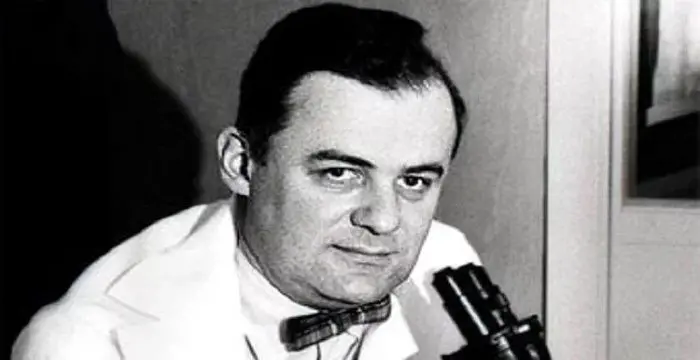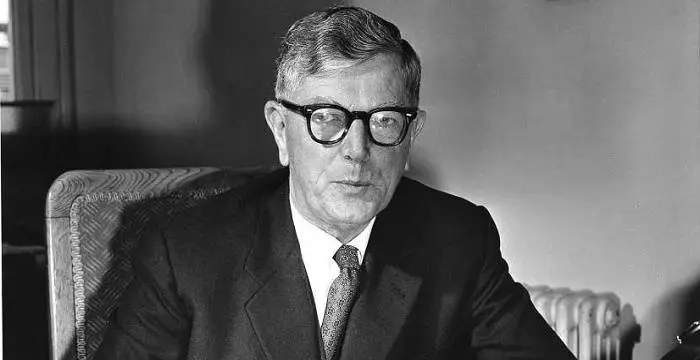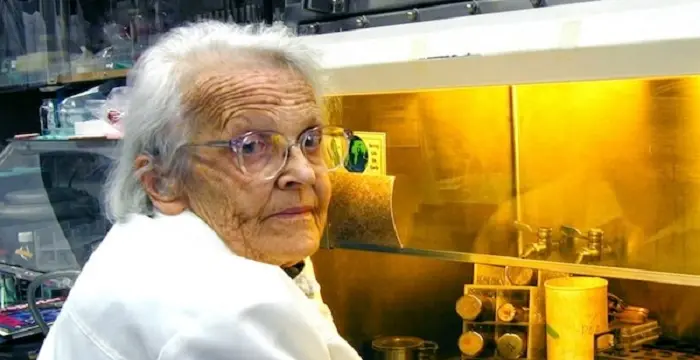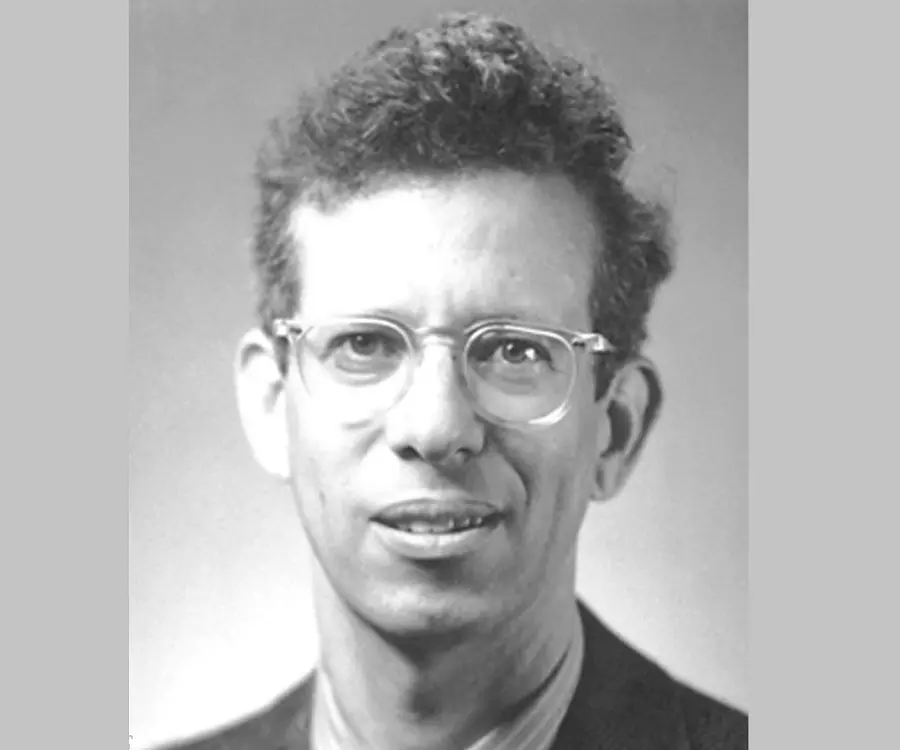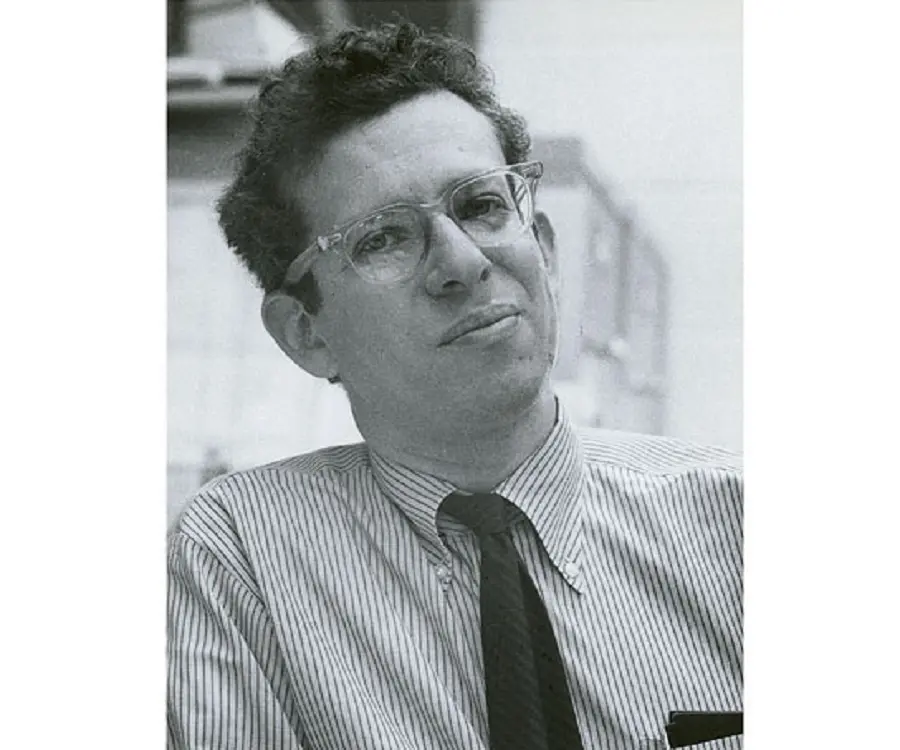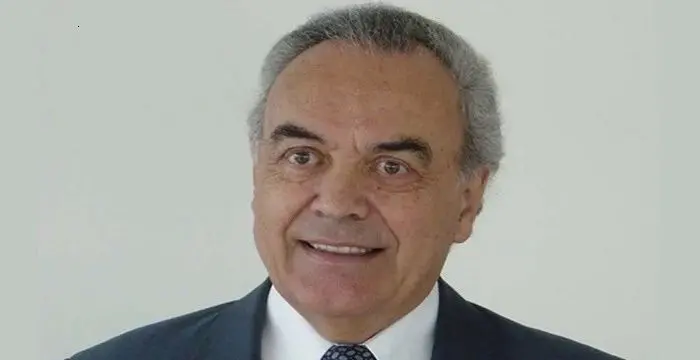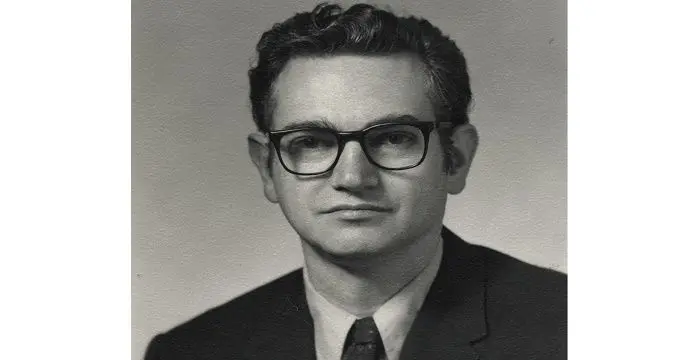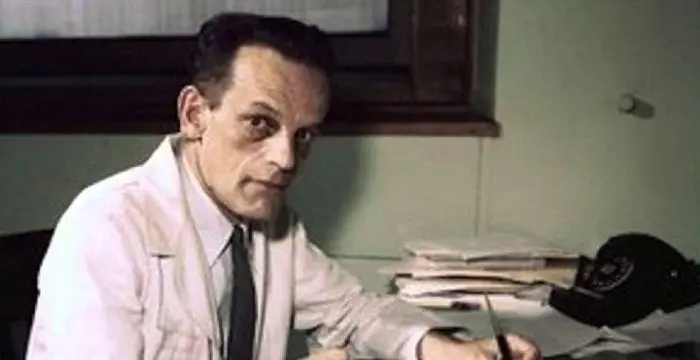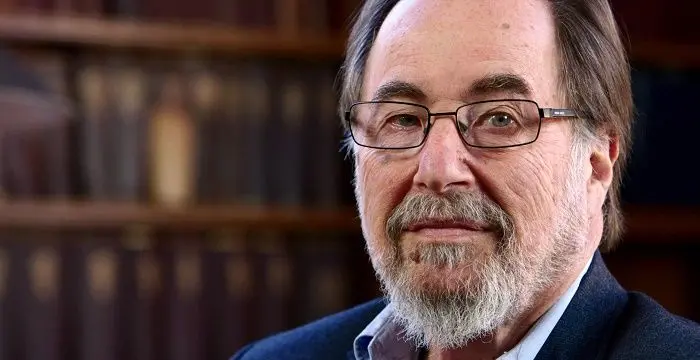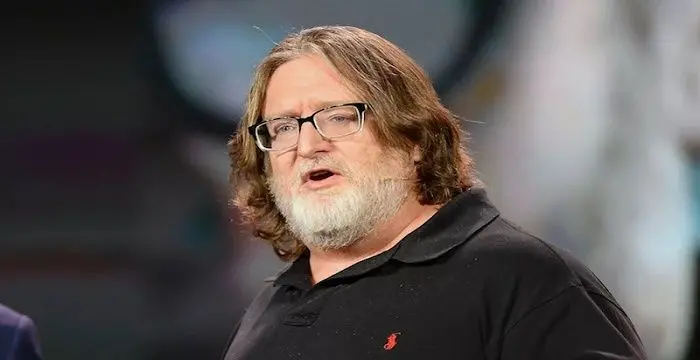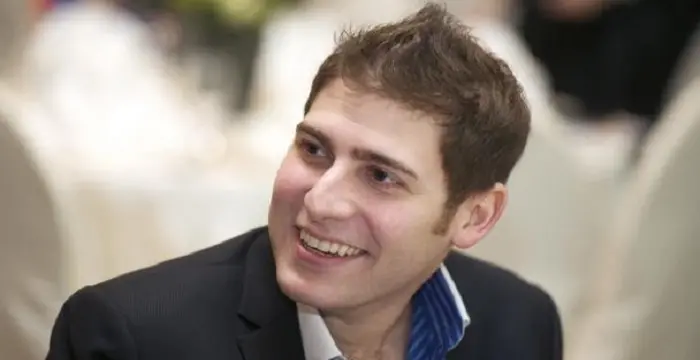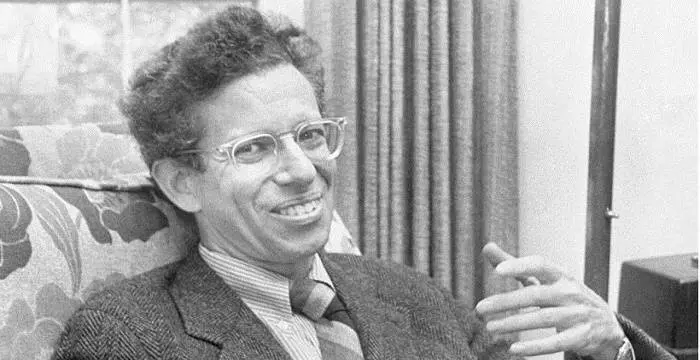
Howard Martin Temin - Virologists, Life Achievements and Personal Life
Howard Martin Temin's Personal Details
Howard Martin Temin was an American geneticist and virologist who won a share of the 1975 Nobel Prize in Physiology or Medicine.
| Information | Detail |
|---|---|
| Birthday | December 10, 1934 |
| Died on | February 9, 1994 |
| Nationality | American |
| Famous | Scientists, Geneticists, Virologists, Geneticists, Virologists |
| Spouses | Rayla Greenberg (m. 1962) |
| Birth Place | Philadelphia, Pennsylvania, United States |
| Gender | Male |
| Sun Sign | Sagittarius |
| Born in | Philadelphia, Pennsylvania, United States |
| Famous as | Geneticist and Virologist |
| Died at Age | 59 |
// Famous Virologists
Frederick Chapman Robbins
Frederick Chapman Robbins was an American paediatrician and virologist who was one of the joint winners of the 1954 Nobel Prize in Physiology 1954. Check out this biography to know about his childhood, life, achievements, works & timeline.
Frank Macfarlane Burnet
Sir Frank Macfarlane Burnet was an Australian virologist and immunologist, known for his contributions in human biology. This biography profiles childhood, life, career, achievements and timeline of this Nobel Laureate.
Marguerite Vogt
Marguerite Vogt was a German-born American cancer biologist and virologist best known for her research on polio and cancer.
Howard Martin Temin's photo
Who is Howard Martin Temin?
Howard Martin Temin was an American geneticist and virologist who won a share of the 1975 Nobel Prize in Physiology or Medicine. A medical researcher, he played a major role in discovering an enzyme that is used to generate complementary DNA (cDNA) from an RNA template, a process termed reverse transcription. His discoveries helped to gain an understanding of how some cancer cells operate and later played a crucial role in identifying the AIDS virus. Born to a mother who was active in educational affairs, he was academically inclined from a young age. During his high school years, he participated in a summer program at the Jackson Laboratory in Bar Harbor which kindled his interest in biological sciences. He published his first scientific paper at the age 18 and received his bachelor's degree from Swarthmore College in 1955 majoring and minoring in biology in the honors program. After earning his doctorate from the California Institute of Technology he embarked on a career in research during the course of which he made key contributions to the study of cancer. He independently discovered reverse transcriptase which is one of the most important discoveries of the modern era of medicine. In an ironic twist of fate, the cancer researcher was himself diagnosed with the disease and succumbed to it at the age of 59.
// Famous Geneticists
Werner Arber
Werner Arber is a Swiss microbiologist and a geneticist who was awarded the Nobel Prize in Physiology or Medicine in 1978. This biography provides detailed information about his childhood, life, career, research, achievements and timeline.
Marshall W. Nirenberg
Marshall W. Nirenberg was an American geneticist who was one of the winners of the 1968 Nobel Prize in Medicine. This biography of Marshall W. Nirenberg provides detailed information about his childhood, life, achievements, works & timeline.
Childhood & Early Life
Howard Martin Temin was born in Philadelphia on December 10, 1934, to Jewish parents. His mother, Annette Lehman, was an activist who was often involved in educational affairs and his father, Henry Temin, was an attorney. Howard had two brothers.
While he was a student at Central High School in Pennsylvania, he participated in the Jackson Laboratory's Summer Student Program in Bar Harbor where he displayed an extraordinary aptitude for science. He also spent a summer at the Institute for Cancer Research in Philadelphia.
He joined the Swarthmore College in 1951 and graduated in 1955 with a bachelor's degree, majoring and minoring in biology in the honors program. He then proceeded to study experimental embryology at the California Institute of Technology in Pasadena. After several months he changed his major to animal virology, becoming a graduate student in the laboratory of Professor Renato Dulbecco.
At the institute he was greatly influenced by Professor Max Delbrück and by Dr. Matthew Meselson. Temin earned his Ph.D. degree in animal virology in 1959 and spent an addition year in Professor Dulbecco's laboratory as a postdoctoral fellow.
Career
He was appointed as an Assistant Professor in the McArdle Laboratory for Cancer Research at the University of Wisconsin-Madison in 1960. It was here that he began working on the ground breaking research that led to his formulating the DNA provirus hypothesis.
Over the ensuing years he rose through the ranks, successively becoming Associate Professor, Full Professor, and Wisconsin Alumni Research Foundation Professor of Cancer Research. He was made the American Cancer Society Professor of Viral Oncology and Cell Biology in 1974.
During the 1960s, he focused on studying the Rous sarcoma virus. His investigations on the control of multiplication of uninfected and Rous sarcoma virus-infected cells in culture led him to the discovery of reverse transcriptase (RT)—the enzyme used to generate complementary DNA (cDNA) from an RNA template.
Initially his discovery was criticized by prominent scientists as the idea of RT contradicted the central dogma of molecular biology which states that DNA is transcribed into RNA which is then translated into proteins. At around the same time, another scientist, David Baltimore, independently isolated RT from two RNA tumor viruses and the concept of RT began to gain acceptance.
For his discoveries Temin won a share of the 1975 Nobel laureate in Physiology or Medicine. His elevated stature as an internationally respected scientist motivated him to become more active in scientific community outside of research.
In 1979, he became an advisory member for the director of the National Institute of Health (NIH). The same year he also became a member of the human gene therapy subgroup of the recombinant DNA advisory committee. He was a fellow of the American Academy of Arts and Sciences and a member of the National Academy of Sciences as well.
Major Works
Temin independently discovered reverse transcriptase which is an enzyme used to generate complementary DNA (cDNA) from an RNA template through a process termed as reverse transcription. He initially faced much criticism for his idea of reverse transcription as it contradicted the central dogma of molecular biology. With time he gained recognition for this vital discovery which is today of tremendous significance to medical research.
Awards & Achievements
In 1972, he was given the NAS Award in Molecular Biology for his work leading to the discovery of reverse transcription.
Howard Martin Temin, David Baltimore, and Renato Dulbecco were jointly awarded the Nobel Prize in Physiology or Medicine in 1975 "for their discoveries concerning the interaction between tumor viruses and the genetic material of the cell."
Personal Life & Legacy
Howard Martin Temin married Rayla Greenberg, a medical geneticist, in 1962 and had two children.
He was a non-smoker and a vocal crusader against cigarettes. Ironically he became ill with adenocarcinoma, a type of lung cancer that is not linked to smoking. He remained active for as long as his health allowed him to, and breathed his last on February 9, 1994.
A walking path along Lake Mendota at UW–Madison was renamed the Howard M. Temin Path in his honor in 1998.
// Famous Virologists
Max Theiler
Max Theiler was a South African-American virologist who developed a vaccine against yellow fever. This biography of Max Theiler provides detailed information about his childhood, life, achievements, works & timeline.
Frederick Chapman Robbins
Frederick Chapman Robbins was an American paediatrician and virologist who was one of the joint winners of the 1954 Nobel Prize in Physiology 1954. Check out this biography to know about his childhood, life, achievements, works & timeline.
David Baltimore
David Baltimore is an American biologist who won a share of the 1975 Nobel Prize in Physiology or Medicine. This biography of David Baltimore provides detailed information about his childhood, life, achievements, works & timeline.
Howard Martin Temin's awards
| Year | Name | Award |
|---|---|---|
Other | ||
| 1972 | NAS Award in Molecular Biology | |
| 1992 | National Medal of Science for Biological Sciences | |
| 0 | 1975 - Nobel Prize in Physiology or Medicine | |
| 0 | 1974 - Albert Lasker Award for Basic Medical Research | |
| 0 | 1974 - Gairdner Foundation International Award | |
Howard Martin Temin biography timelines
- // 10th Dec 1934Howard Martin Temin was born in Philadelphia on December 10, 1934, to Jewish parents. His mother, Annette Lehman, was an activist who was often involved in educational affairs and his father, Henry Temin, was an attorney. Howard had two brothers.
- // 1951 To 1955He joined the Swarthmore College in 1951 and graduated in 1955 with a bachelor's degree, majoring and minoring in biology in the honors program. He then proceeded to study experimental embryology at the California Institute of Technology in Pasadena. After several months he changed his major to animal virology, becoming a graduate student in the laboratory of Professor Renato Dulbecco.
- // 1959At the institute he was greatly influenced by Professor Max Delbrück and by Dr. Matthew Meselson. Temin earned his Ph.D. degree in animal virology in 1959 and spent an addition year in Professor Dulbecco's laboratory as a postdoctoral fellow.
- // 1960He was appointed as an Assistant Professor in the McArdle Laboratory for Cancer Research at the University of Wisconsin-Madison in 1960. It was here that he began working on the ground breaking research that led to his formulating the DNA provirus hypothesis.
- // 1962Howard Martin Temin married Rayla Greenberg, a medical geneticist, in 1962 and had two children.
- // 1972In 1972, he was given the NAS Award in Molecular Biology for his work leading to the discovery of reverse transcription.
- // 1974Over the ensuing years he rose through the ranks, successively becoming Associate Professor, Full Professor, and Wisconsin Alumni Research Foundation Professor of Cancer Research. He was made the American Cancer Society Professor of Viral Oncology and Cell Biology in 1974.
- // 1975For his discoveries Temin won a share of the 1975 Nobel laureate in Physiology or Medicine. His elevated stature as an internationally respected scientist motivated him to become more active in scientific community outside of research.
- // 1975Howard Martin Temin, David Baltimore, and Renato Dulbecco were jointly awarded the Nobel Prize in Physiology or Medicine in 1975 "for their discoveries concerning the interaction between tumor viruses and the genetic material of the cell."
- // 1979In 1979, he became an advisory member for the director of the National Institute of Health (NIH). The same year he also became a member of the human gene therapy subgroup of the recombinant DNA advisory committee. He was a fellow of the American Academy of Arts and Sciences and a member of the National Academy of Sciences as well.
- // 9th Feb 1994He was a non-smoker and a vocal crusader against cigarettes. Ironically he became ill with adenocarcinoma, a type of lung cancer that is not linked to smoking. He remained active for as long as his health allowed him to, and breathed his last on February 9, 1994.
// Famous Scientists
Juliane Koepcke
Juliane Koepcke is a German-Peruvian biologist, who was the lone survivor among the 92 passengers and crew of the ill-fated LANSA Flight 508 that crashed in the Peruvian rainforest on 24 December 1971. Know more about her life in this biography.
Henry Cavendish
Henry Cavendish was a theoretical chemist and physicist, renowned for discovery of hydrogen and calculation of the mass of earth. To know more about his childhood, profile, timeline and career read on
Konstantin Tsiolkovsky
Konstantin Tsiolkovsky was a Russian rocket scientist and a pioneer of astronautics. This biography provides detailed information about his childhood, family, personal life, career, achievements, etc.
Gabe Newell
Gabe Newell is an American computer programmer and businessman, best known as the co-founder of ‘Valve Corporation.’ This biography provides detailed information about his childhood, family, personal life, career, etc.
Grigori Perelman
Grigori Perelman is a Russian mathematician who is best known for his contributions to Riemannian geometry and geometric topology. Check out this biography to know about his childhood, family life, achievements and fun facts about him.
Eduardo Saverin
Eduardo Luiz Saverin is a Brazilian internet entrepreneur and investor. This biography profiles his childhood, life, career, achievements, and timeline
Howard Martin Temin's FAQ
What is Howard Martin Temin birthday?
Howard Martin Temin was born at 1934-12-10
When was Howard Martin Temin died?
Howard Martin Temin was died at 1994-02-09
Which age was Howard Martin Temin died?
Howard Martin Temin was died at age 59
Where is Howard Martin Temin's birth place?
Howard Martin Temin was born in Philadelphia, Pennsylvania, United States
What is Howard Martin Temin nationalities?
Howard Martin Temin's nationalities is American
Who is Howard Martin Temin spouses?
Howard Martin Temin's spouses is Rayla Greenberg (m. 1962)
What is Howard Martin Temin's sun sign?
Howard Martin Temin is Sagittarius
How famous is Howard Martin Temin?
Howard Martin Temin is famouse as Geneticist and Virologist
